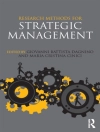Nano drug-delivery systems responding to cellular local stimuli, such as p H, temperature and reductive agent’s activation, i.e. enzymes, could effectively provide passive-mode desirable release but fail in disease treatment following the biological rhythms of brain tumor. Undoubtedly, physical stimulation of functional hybrid nanostructures can release chemotherapeutic cargos more efficiently and could offer an alternative solution as on-demand breast-cancer theranostics. Moreover, remote physical triggering of these nanostructures are more advantageous in terms of improved therapeutics efficiency, spatial and temporal controllability over the chemically stimulated release, the lack of undesirable adverse effects and minimal cargo detachment during the in vivo delivery.
This book is a compilation of research development lead by expert researchers and it establishes a single reference module. These novel multimodalities can be extremely potent in understanding cancer through real-time observation of drug delivery, release and activity for non-conventional breast-cancer therapies. In this scenario, the text directly addresses, for the first time, all translational aspects and clinical perspectives of physically stimulated breast-cancer nanotheranostics from a wide-ranging and multidisciplinary perception providing unrivalled and comprehensive knowledge in the field.
Inhaltsverzeichnis
Preface
Acknowledgments
Author biographies
1. Introduction to External field stimulation modalities
2. Physically responsive nanostructures in breast cancer theranostics
3. Externally/Physically stimulated breast cancer nanomedicine
4. Magnetically Stimulated Breast Cancer Nanomedicines
5. Magneto-Plasmonic stimulated breast cancer nanomedicine
6. Radiation and Ultrasound Stimulated Breast Cancer Nanomedicine
7. Radiotherapy and Breast Cancer Nanomedicine
8. Ionizing Radiation Stimulated Breast Cancer Nanomedicine
9. Strengths and Limitations of Physical Stimulus in Breast Cancer Nanomedicine
10. Pharmacokinetics of Nanomedicine for Breast Cancer
11. Clinical and preclinical trials of breast cancer
12. Biological systems: a challenge for physical stimulation of cancer nanomedicine
Über den Autor
Nanasaheb D Thorat is a Marie Curie Fellow (IF) at the Department of Biomedical Engineering at the Wrocław University of Science and Technology, Poland, and is currently serving as a Management Committee member of the European Commission’s Horizon 2020 Cooperation in Science and Technology (COST) Programme. Thorat is an active member of various scientific societies such as European Materials Research Society (EMRS), International Magnetic Society, European Nanomedicine Society. Joanna Bauer is an assistant professor in the Department of Biomedical Engineering at the Wrocław University of Science and Technology, Poland, and is an author and co-author of more than 90 publications and 60 conference presentations, including more than 20 plenary and invited lectures. She has more than seventeen years’ experience in carrying out national and international scientific projects within programmes such as State Committee for Scientific Research (KBN), Deutscher Akademischer Austauschdienst (DAAD) European Social Funds (ESF), FP6, FP7 and H2020.












